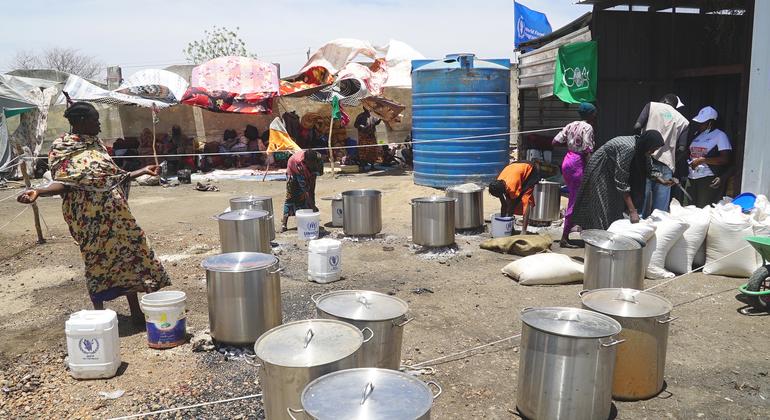In the face of continued global geopolitical uncertainty, Europe is paying increasing attention to its sovereignty, security and resilience.
The availability of critical medicines and vaccines is central to Europe’s health preparedness. As governments across Europe rebuild and learn from the pandemic, the policies that can build health resilience and strengthen health systems are in sharp focus; the concept of open strategic autonomy is top of the EU policy agenda.
The EU Pharmaceutical Legislation provides the European Commission with the perfect vehicle to address health resilience, improve patient outcomes and develop strategies to support and grow the regions’ life science sector and research and development (R&D) footprint.
It is important that any focus on self-sufficiency and addressing global supply dynamics does not lose sight of the objective of fostering a healthier, prosperous and globally competitive Europe.
Building resilience through research
The innovative industry needs conditions that attract R&D investments, so that Europe remains competitive while benefiting from global supply chains and R&D networks.
The innovative industry needs conditions that attract R&D investments, so that Europe remains competitive while benefiting from global supply chains and R&D networks. A resilient manufacturing base begins with ensuring R&D is done in the EU.
Europe is competing for investment with the U.S., as well as with emerging nations like China and Brazil. The trends are concerning: in 2002 the U.S. spent €2 billion more than Europe on R&D; today that figure is almost €25 billion. In 2020 Europe accounted for a 19.3 percent share of global clinical trial activity, a decrease of 6.3 percent, compared with a 25.6 percent average over the past 10 years. For advanced therapy medicinal products, clinical trial activity is twice as high in the U.S. and almost three times as high in China than in Europe.
Europe needs policies that will encourage companies to invest in Europe.
Policy solutions need to be carefully targeted to address the issues without impeding innovation or harming European competitiveness.
Finding the right policy solution for the right problem
No EFPIA member had shortages of medicines to report to the European Medicines Agency during the pandemic. In fact, only 4 percent of shortages are related to innovative medicines.1
For context, in the innovative sector 54 percent of active pharmaceutical ingredients (APIs) needed for originators’ medicines production in the EU come from the EU itself. That’s 64 percent if the U.K. and Switzerland are included. Meanwhile, 15 percent of APIs come from North America, and only 6 percent from India, 5 percent from China and 10 percent from across other countries.
Policy solutions need to be carefully targeted to address the issues without impeding innovation or harming European competitiveness.
The proposals to reduce regulatory data protection — an important part of Europe’s intellectual property (IP) — by a quarter, will do the opposite.
The proposals to reduce regulatory data protection — an important part of Europe’s intellectual property (IP) — by a quarter, will do the opposite. Given the downward trends we should be strengthening IP if we are to close the gap on Asia and the U.S.
The innovative industry supports pragmatic policies, like the establishment of a European critical medicines list, whose supply, production and value chains can be monitored, as well as exploring a Critical Medicines Act to reduce dependency on non-EU countries.
These policies must be designed in close cooperation with — and with early involvement from — manufacturers, in order to avoid multiple systems working in parallel, and the multiplication of country stockpiling requirements.
Different parts of the medicines sector face different issues and require different solutions, as well as a multifaceted approach, addressing the root causes of shortage, with partners working together to build trust and increase transparency in the whole supply chain.
In a world characterized by uncertainty and global insecurity, diversifying and limiting restrictions in supply chains mitigates risk.
In a world characterized by uncertainty and global insecurity, diversifying and limiting restrictions in supply chains mitigates risk. That means supporting open global supply chains, creating alliances with strategic partners with common interests, and thus creating the conditions in Europe for life-sciences manufacturing to flourish.
This should include solidarity agreements between EU countries that would allow for transfer of critical medicines during stockouts, and the consistent use of electronic patient information to accelerate allocation of supplies to countries in need.
Using data and new technology to improve transparency of supply chains
Europe is not using the data at its fingertips to manage supply and mitigate shortages. We need better visibility of the available stocks of medicines throughout the supply chains, in an integrated system.
The European Medicines Verification System (EMVS) data repositories, set up in the context of the EU Falsified Medicines Directive to prevent and monitor shortages, are critical.
EMVS data has the potential to follow when — and how — medicinal products are placed on different markets, as well as the rate of consumption at national level.
The confidential use and analysis of this data by competent authorities would bring a better understanding of the root causes of shortages, to develop adequate responses to a specific situation.
The data stored in the National Medicines Verification Systems would provide intelligence about packs of prescription products supplied by manufacturers in the EU countries, the number of packs dispensed in national pharmacies, number of packs exported and imported, as well as the level of stocks present in the supply chain at country level. The real-time information can be analyzed according to granular time frames, as well as per region.
This wealth of data would facilitate the detection and mitigation using every tool available to protect patient safety and public health.
This wealth of data would facilitate the detection and mitigation using every tool available to protect patient safety and public health.
Increased understanding of patient demand, through timely epidemiological data is also vital: the European Centre for Disease Control can provide the modelling data covering patient needs and hospital capacity in the member states.
Actions to prevent and mitigate shortages must be differentiated; a one-size-fits-all solution will not succeed. Action will be most efficient if organized and coordinated at EU level, avoiding the multiplication of uncoordinated measures adding complexity to the system. Companies run global supply chains; a coordinated process across EU countries would be most effective in ensuring they continue to run smoothly.
Taken together these actions will help achieve the joint goals of a competitive and resilient Europe, and ensure patients continue to get access to the medicines they need, wherever they are in Europe.
- IQVIA, October 2023




